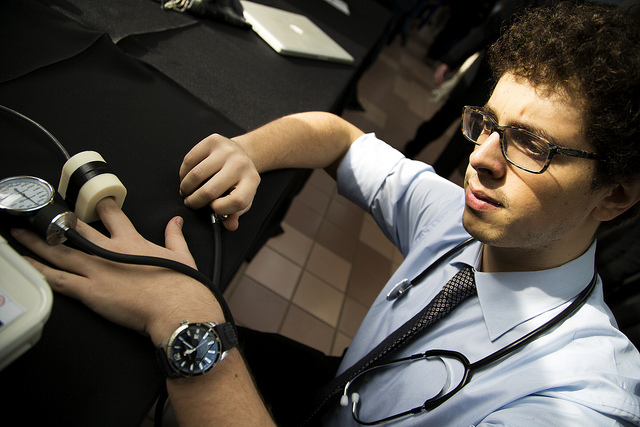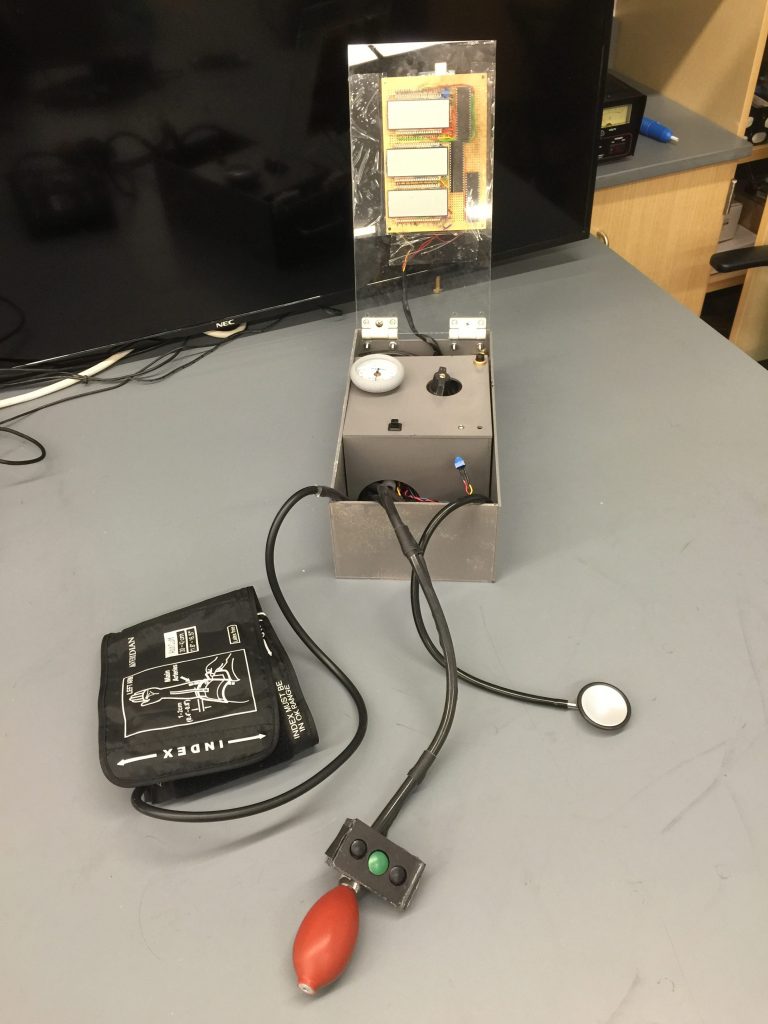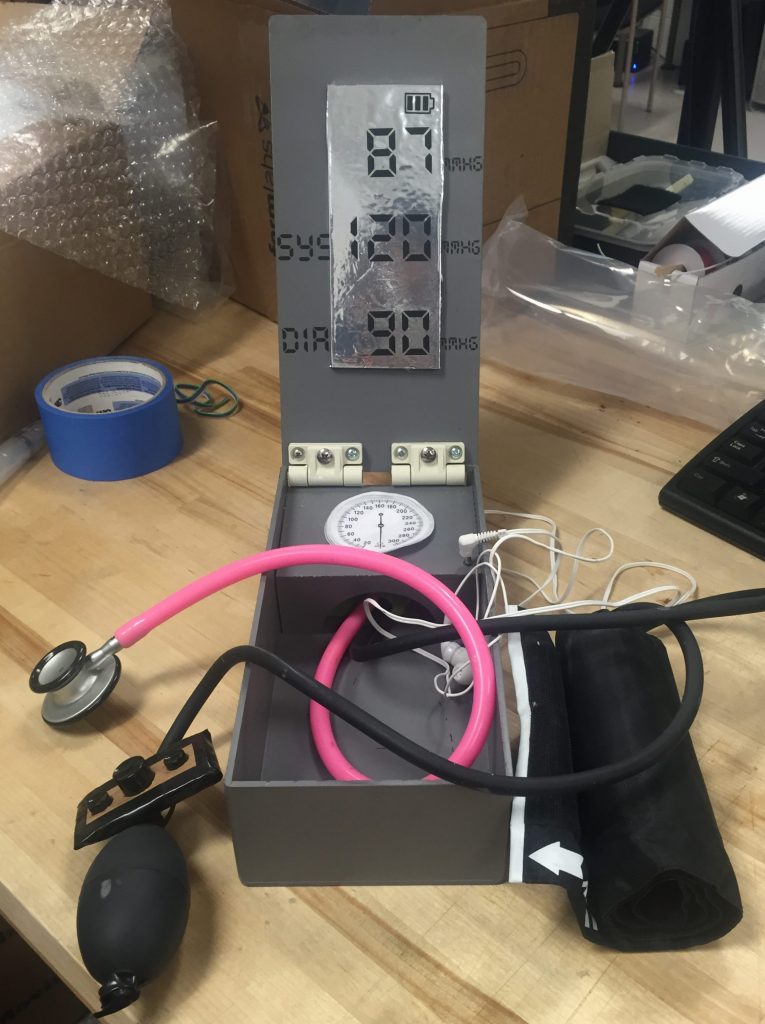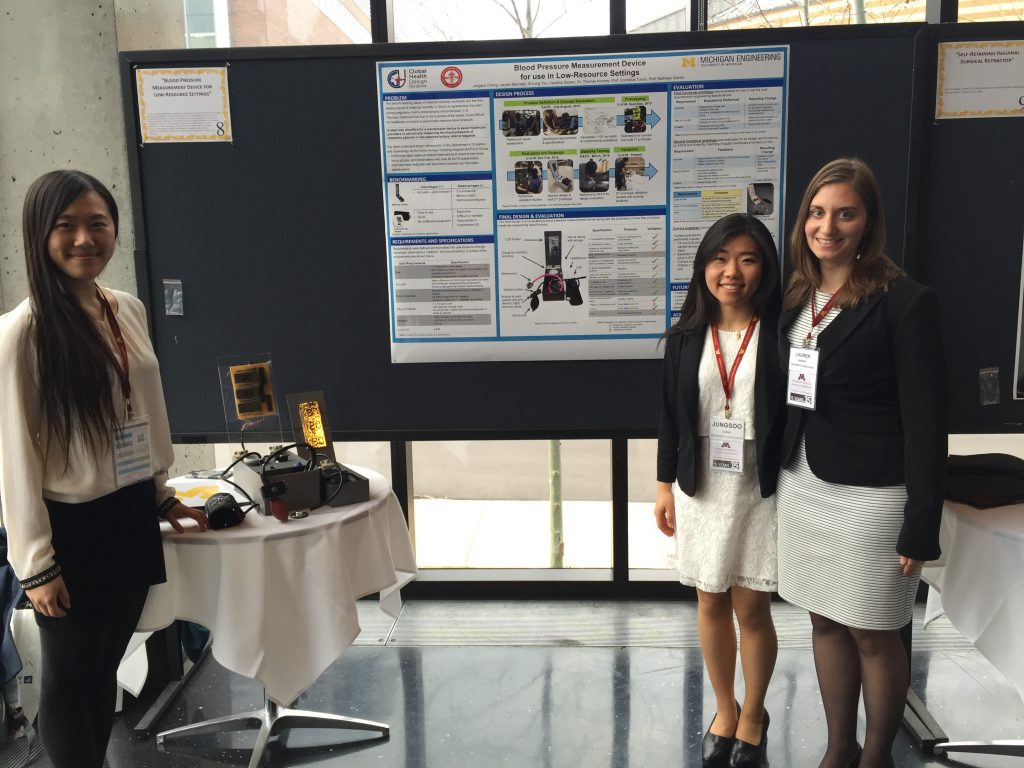Description
99% of maternal deaths occur in low and middle-income countries, and over half of these deaths occur in sub-Saharan Africa. Hypertensive disorders, mainly preeclampsia and eclampsia, are the second leading cause for maternal mortality worldwide. WHO reports complications from hypertension account for 9.4 million deaths worldwide every year with the majority in low income countries. According to the WHO, the detection of hypertension in developing countries is often missed largely due to the unavailability of suitable blood pressure measurement devices and inaccurate readings.
The student design team members spent eight weeks in the Obstetrics and Gynecology Department at a tertiary referral hospital, Komfo Anokye Teaching Hospital (KATH), in Kumasi, Ghana. The team observed healthcare providers experiencing some difficulties in following obstetrics patients’ blood pressure management plans due to the high volume of patients in the hospital and the business of the wards. The team identified an opportunity for the development of a blood pressure measurement device to aid the healthcare providers in measuring the patients’ blood pressures according to their management plans. This project is in collaboration with clinical mentors and advisors at University of Michigan Hospital and Komfo Anokye Teaching Hospital in Kumasi, Ghana. Healthcare providers at Komfo Anokye Teaching Hospital in Kumasi Ghana and at University of Michigan Health Systems were interviewed and observed in order to obtain concepts, user requirements, and specifications for the design.
The design has subsets of standard features of a blood pressure device but also meets the benchmarked gap, as it attempts to be easier to use and maintainable in the target setting.The current concept solution is an enhanced auscultatory blood pressure measurement device. It utilizes the auscultatory measurement method, includes an LCD display, and is equipped with cross-checking and automatic deflation capability. The cross-checking method incorporates an embedded aneroid pressure gauge, which could be connected by turning a ball valve for comparing the gauge to the pressure reading displayed on the LCD screen. The design features a modified hand pump that manually inflates the blood pressure cuff and buttons that allow for marking of systolic and diastolic values and also automatically deflate the cuff. The constant deflation is at literature recommended 3 mmHg/s; by automatic the deflation, there are less simultaneous actions the provider must perform and while also increasing the accuracy of the deflation rate.A microphone stethoscope with earphones is used to listen to the Korotkoff sounds and a volume control knob can be used to adjust the volume of the microphone. When not in use, the cuff, stethoscope, earphones, and the bulb pump are stored within the device.
I was drawn to the GHDI program because of its emphasis on collaborating with stakeholders when designing for social impact. What most surprised me about the program was how easy it was for my team to collaborate with our hospital counterparts in Ghana. This fact alone demonstrates the program’s dedication to maintaining meaningful relationships with its hospital partners which I think sets the program apart from the rest.
What to Know About The Global Health Design Initiative

Program History
GHDI has been working with stakeholders for more than eight years to identify and address global health design challenges. Learn more about our history and core values.
Learn More →
Project Outcomes
Since inception, we have worked on projects in maternal health, family planning, minimally invasive surgery, physical medicine and rehabilitation, and more. Explore our past and current projects.
Learn More →
Get Involved
There are many ways to get involved in global health work with GHDI. From taking on a need statement, to participating in an opportunity, or becoming a partner.
Learn More →




